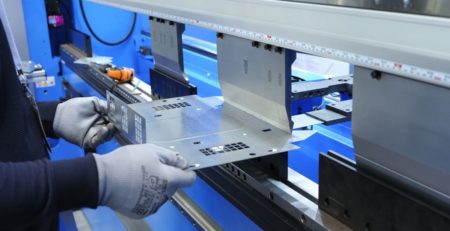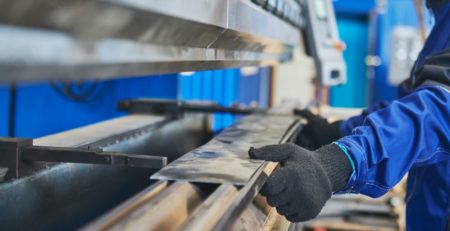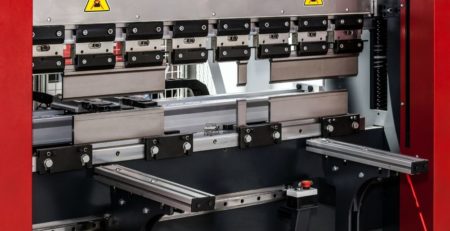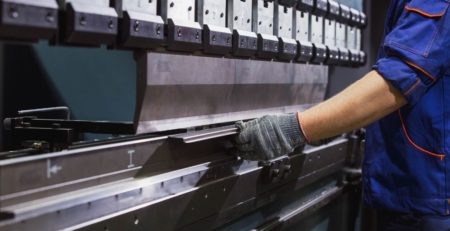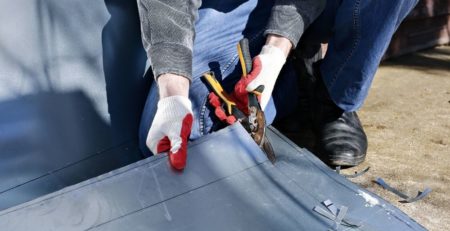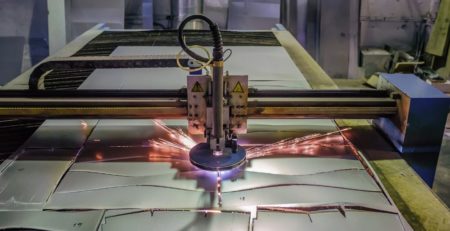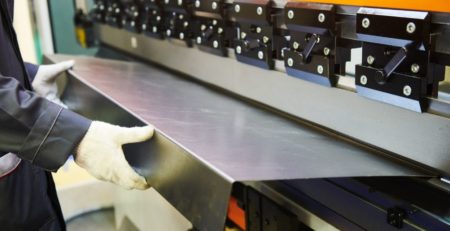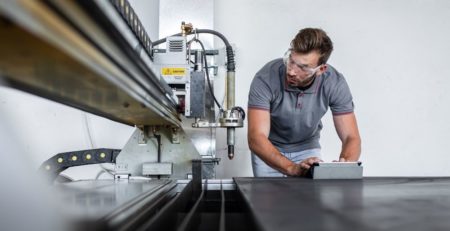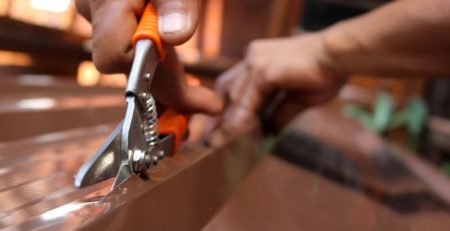Guide to Tandem Press Brakes for Long Sheet Metal Bending
Metal fabrication shops have a lot of different machines to accomplish various tasks. One of the largest machines in any shop is the press brake. It bends and shapes significant pieces of metal needed for heavy-duty manufacturing. Unfortunately, some pieces of metal are too large for these machines. Thankfully, manufacturers have developed tandem press brakes capable of handling these long pieces of metal. Read on to learn more about how tandem press brakes make long sheet metal bending easy.
Efficiency Does Not Equate to Safety
One important thing to know about tandem press brakes is that while they are more capable, they still suffer many of the same issues as traditional press brakes. Operators are still are at risk due to rotating parts, nip points, flying chips, and sparks. Like conventional press brakes, they have basic safeguarding measures like the fixed and interlocked barrier guard. There can also be additional safeguarding in the form of pullbacks and restraints, as well as two-hand down/foot-through devices, though these are incredibly restrictive and slow.
Some advanced safeguarding tools allow for greater freedom of movement, such as electrosensitive light curtains. However, operators must work closer to the brake to make them work. An effective safeguarding measure is the AOPD laser, which allows the operator to have closer access and utilize a foot pedal for a safer operation. The AOPD system monitors safe speeds and stopping distances, and the system issues a stop command to the machine if it exceeds the limit.
Tandem Press Brakes Need Planning
When working with any machine, you must prepare and plan to ensure everything works as intended. Metal fabrication is a precise science and an art, and there are a lot of factors that operators must consider before making any bend. For example, you must consider the bending force required, the type of metal you’re bending, the punches, the dies, how many bends, etc.; you need to plan all of this to work with the specific machine. One minor miscalculation can result in a failed job.
Before operating a tandem press brake, operators must plan for the bend and conduct a run-through to ensure the machine is clear of debris and other contaminants. Since the machine is larger, there will be more aspects that you must check. With tandem press brakes, it is also critical that operators set up and calibrate the machines properly; if the bed, tooling, or ram are not correctly aligned, the bends will not come out cleanly.
Another aspect of tandem press brakes that operators need to understand is that one problem in one machine will affect the other. This is because both devices are working in tandem, meaning that an issue felt by one will affect the entire operation. In addition, operators must ensure that auxiliary components such as back gauges and crowning devices on both machines are working in conjunction with one another. If one is off, the entire operation can go astray.
Press Brake Tonnage
Another reason someone may opt for a tandem press brake rather than a traditional press brake is tonnage. There are a lot of variables at play when bending and shaping metal, such as thickness and length; you’ll need a press brake that can accommodate those variables. For example, an aluminum alloy needs less force to bend than steel or bronze. You must choose the right press brake to ensure that you bend the metal properly without incident, and tandem press brakes have multiple options to help you do this.
One of the most significant advantages of tandem press brakes is that they can deal with larger pieces of metal. Sure, there may need to be some other calculations to ensure you conduct the bend correctly, as different materials require different bending forces. However, with that said, tandem press brakes can accommodate those various required forces.
A common misconception says that tandem press brakes double the load for the machines regardless of where the bend takes place. In reality, the entire combined tonnage of the machine will only apply to full-length parts. Attempting to use the full tonnage of both machines across parts not running the whole length of the machine can prematurely wear down components.
In addition, exceeding the tons-per-foot rating of the different tooling can cause components to wear or the crashing of punches and dies. Off-center loading on tandem press brakes can also place undue stress onto cylindrical seals and gibbing components. A good rule of thumb when working with tandem press brakes is that if an operation creates issues for one press brake, it will likely also cause issues in tandem press brakes.
Tandem Press Brakes Are Cost Effective
In addition to helping bend longer pieces of sheet metal, tandem press brakes increase productivity and throughput for the entire shop. Tandem press brakes can take care of the larger metal pieces with an accuracy and precision typically reserved for smaller machines. These machines can also be separated and work individually as smaller press brakes. This ability allows metal fabrication shops to be more flexible with their project approaches. The machines can work jointly on a larger project or independently for smaller projects.
Operators typically use these press brakes from a single CNC workstation. However, when divided into two or three press brakes, you can still control all devices with that controller. You can also control each machine independently, opening up even more options for production. These areas of operation quickly make up for the price tag associated with these machines.
The flexibility they offer allows your shop to serve all your customers’ needs, regardless of the different parts they want. Yes, you could purchase a larger machine at a better rate than two smaller machines, but then you are stuck with only one device. The significant advantage of tandem press brakes is that you can take on large jobs. When you have smaller jobs, you have two or three machines working simultaneously. This versatility quickly makes up for the dollar value associated with these machines.
Long sheet metal bending is easy with tandem press brakes, but finding a suitable machine can still be a struggle. Here at Mac-Tech, we can make it easy. We have a wide array of hydraulic tandem press brakes to meet your shop’s every need, ensuring you can get the job done quickly and easily!




